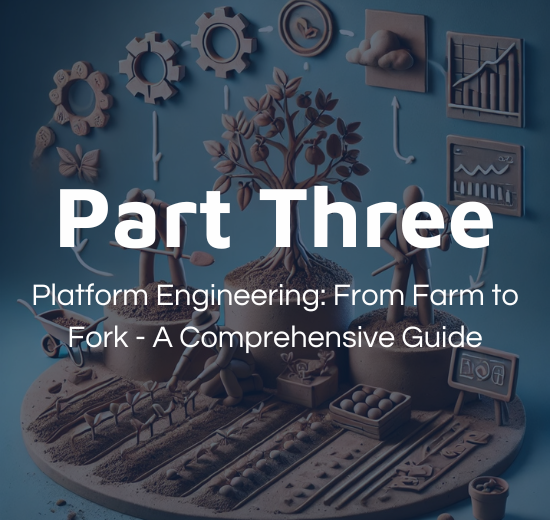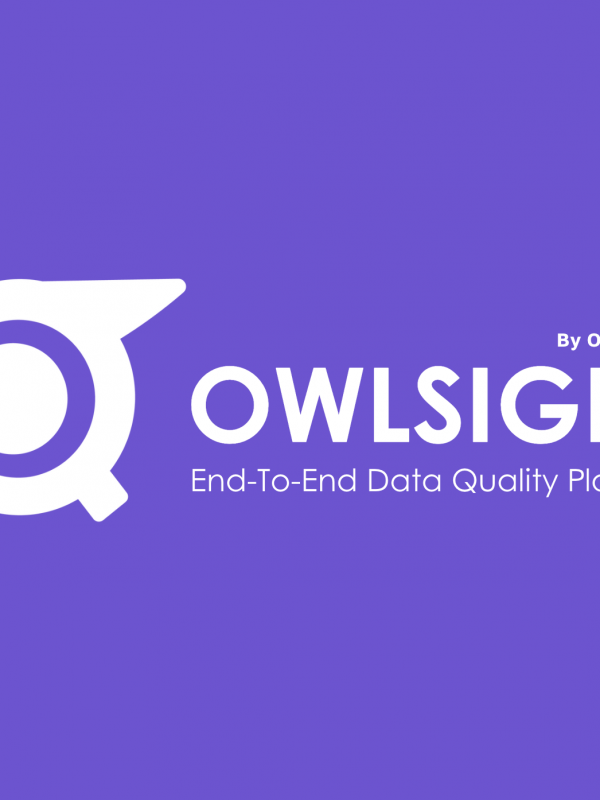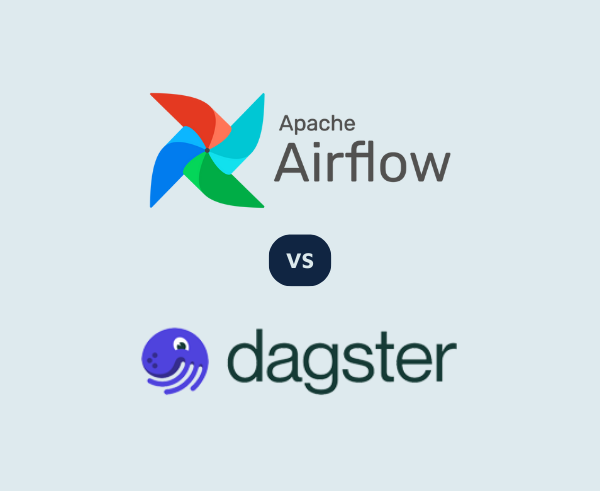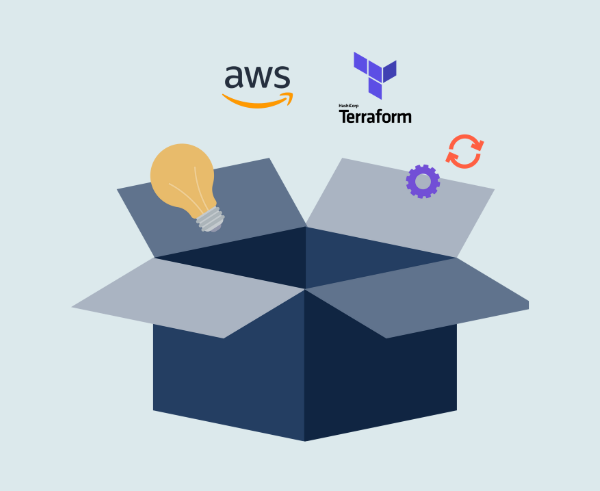Welcome to the final part of our Platform Engineering series where we’ve been exploring the platform engineering journey “farm to fork” style. In the previous parts, we laid the foundations of platform engineering and examined the challenges of building a truly great platform. Now, we turn our focus to one of the most crucial aspects of this journey: assessing your platform’s maturity and ensuring continuous improvement.
So, how do you know where you stand on your platform engineering journey? Are you still laying the foundations, or are you optimising and scaling? And crucially how do you ensure continuous improvement?
Understanding your current position and where you want to go is key to building a sensible roadmap. This is where the Platform Engineering Maturity Model can become a helpful tool in your toolbox to tackle this subject.
Side note: It may be helpful to watch either the short version of my talk or the slightly longer version if you are more of a visual learner. The talk includes some evolving illustrations which helps to visually convey the progression of progress and may provide a more intuitive feel for what this is and how to practically apply it.
Platform Engineering Maturity Model

The Platform Engineering Maturity Model was originally created and then donated by Syntasso (a strategic partner of OpenCredo) to the CNCF in 2023, with OpenCredo contributing to this early version. In November 2023 the CNCF released v1.0, which is best described as a collation of patterns, wisdom, and insights gained from the community and crafted into a handy matrix to help organisations understand:
- What outcomes and practices exist at different maturity levels of a platform engineering journey.
- Where you currently are on your platform journey.
- What limitations may exist at different levels and opportunities for improvement.
The model has two axes: the vertical axis is divided into the five different aspects to consider and the various Maturity Levels 1-4 are listed along the horizontal axis to help map out where you are. The five aspects are:
- Investment: Focuses on how resources, such as staff and funds, are allocated to build platform capabilities. Higher maturity levels stress the importance of strategic long-term investment.
- Adoption: Examines how and why users discover and use internal platforms, ranging from loosely defined and underused platforms to those that are highly valued and widely adopted.
- Interfaces: Looks at how users interact with and consume platform capabilities, highlighting the evolution from manual processes to more automated and user-friendly interfaces.
- Operations: Focuses on how platform capabilities are planned, prioritised, developed, and maintained, emphasising the need to consider both initial setup (day-one) and ongoing support (day-two).
- Measurement: Involves gathering and incorporating feedback to assess platform maturity, stressing the importance of consistent and quality feedback mechanisms to measure progress and user satisfaction.
Note: This framework isn’t meant to be rigid. Some aspects might apply to your situation more than others. You’re encouraged to use what’s helpful and set aside anything that isn’t.
Applying the Maturity Model to Your Context
In my talk, I go through an example scenario of how the model might practically apply and be realised for a large enterprise looking to scale their teams – specifically an enterprise which may already have a platform centre of excellence (COE) of some sort established.
However, I note that regardless of the scenario, there are a few key steps that everyone can take to understand their position and plot a sensible path forward.
- Identify Ultimate Goals and Constraints: Start by clearly defining what your organisation aims to achieve through its platform engineering initiative – your business goals and drivers. This might include scaling operations, improving efficiency, migrating from legacy systems, or enhancing developer experience. This is crucial to ensure you aim for the right end destination based on your most pressing business goals. It helps avoid unnecessary complexity and unfruitful paths. Alongside these goals, it’s essential to understand the constraints, such as budget, time, existing resources, or organisational structure, that might impact your implementation.
(Remember: You don’t always need to aim for the highest maturity levels in everything. Higher maturity often requires more investment in time, money, and people.
- Assess Your Current Landscape: Evaluate where your organisation currently stands in terms of platform maturity. You can’t improve if you don’t know your starting point. Begin by plotting yourself against the Platform Maturity matrix, even if it’s not perfect. Remember that different aspects might be at different levels—some at Level 1, others at Level 3. Understanding your current position helps identify areas that need improvement and sets realistic milestones to aim for.
- Set Your Target Destination: Once you know where you are, establish where you want to go. Use your business goals and constraints to set a realistic target for your platform’s maturity. Not all aspects need to reach the highest levels; aim for what aligns with your organisation’s priorities which includes time and budget. Knowing where you are and where you want to go, means we can now move onto understanding how to get there effectively.
- Take Small, Iterative Steps: Progress should be made through small, manageable improvements rather than attempting large-scale changes all at once. This iterative approach allows your organisation to experiment, learn, and adapt as you go. By making incremental changes, you can address issues as they arise, refine processes, and gradually move toward the desired level of platform maturity.
The Minimum Viable Platform concept is a great way to anchor your initial thinking around this. Focus on what is the minimum you need to provide in the first instance, then look to expand on this afterwards in small steps.
- Build the Right Foundation: Being strategic about which aspects to focus on first can help to unlock many other improvements later on. This includes addressing the investment, operations, and measurement early in the process. This will help to secure the necessary staffing and gain executive buy-in, shift from a project-based to a product-based approach, and establish reliable feedback mechanisms. This strong foundation supports meaningful, strategic development rather than ad-hoc changes.
- Do Your Technical Due Diligence: Alongside business and strategic assessments, conduct thorough technical due diligence. Don’t overlook the technical side of platform development. For example, decisions like selecting a multi-tenancy model can have significant impacts on costs, security, and operational complexity. Combining technical, business, and policy considerations ensures that the platform’s maturity aligns with your organisation’s overall goals.
- Build the Right Foundation: Being strategic about which aspects to focus on first can help to unlock many other improvements later on. This includes addressing the investment, operations, and measurement early in the process. This will help to secure the necessary staffing and gain executive buy-in, shift from a project-based to a product-based approach, and establish reliable feedback mechanisms. This strong foundation supports meaningful, strategic development rather than ad-hoc changes.
Conclusion
The Platform Engineering Maturity Model is a great tool to help you assess where you are and where you need to go, but remember that it’s not the entire plan. Tailor your strategy to your unique context, balancing people, processes, policies, and technology. This holistic approach is key to a successful platform engineering initiative.
Start by identifying your ultimate goals and constraints. Once you know where you’re starting from and where you want to go, take small, iterative steps toward improvement. Building a strong foundation by focusing on investment, operations, and measurement early on is crucial. Additionally, conducting technical due diligence in parallel with business planning ensures that your decisions are well-informed and aligned with your goals.
Having explored how to assess and advance your platform engineering maturity, it’s clear that this journey is ongoing. It’s not just about where you are now, but about how you’ll continue to evolve. As we wrap up, let’s reflect on the bigger picture and consider what it means to embark on—and sustain—this journey of continuous improvement.
Bringing it all together

Platform engineering is a complex, ongoing journey that requires a deep understanding of both technology and people. Creating a great platform is hard work, but by treating it as a product, gathering regular feedback, and staying focused on continuous improvement, you can build something that truly supports and empowers your organisation.
Remember, this journey isn’t just about reaching a destination—it’s about constantly adapting and improving to meet the needs of your teams. Keep assessing where you are, stay flexible, and always keep your users at the forefront of your efforts.
Thank you for taking this journey with me. I hope this series has provided you with valuable insights and ideas for your own platform engineering journey.
Looking for more help?
OpenCredo has been working with organisations of all shapes and sizes on their platform engineering initiatives. This ranges from strategic consulting and advice, to reviews and assessments, a platform accelerator offering, as well as the provision of leadership and hands-on delivery teams to accelerate the adoption of fit-for-purpose platforms. If you’re looking for more help in this area, please reach out below and let us know how we can help you.
This blog is written exclusively by the OpenCredo team. We do not accept external contributions.




